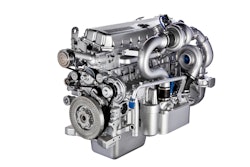Donaldson Company Inc. has reported record second quarter net earnings of $60.1 million, compared with a loss of $52.9 million in 2018. The current- and prior-year periods included tax expense of $0.4 million and $109.7 million, respectively, related to the Federal Tax Cuts and Jobs Act (TCJA). Excluding these impacts, second quarter 2019 adjusted EPS3 increased 9.3% to $0.47 from $0.43 in 2018.
“We delivered second quarter sales and earnings records, with benefits from execution of our strategic priorities and expense leverage more than offsetting the impacts from volatility within the quarter related to market conditions and currency,” says Tod Carpenter, Chairman, President and Chief Executive Officer. “As we move through the cycle, we naturally expect the pace of growth in certain businesses will moderate; however, uneven demand during the past quarter, including a sharp and broad-based slowdown in December, resulted in some adjustments to our full-year forecast.
“Despite these adjustments, which were influenced by currency translation and uncertainty from macro-factors like global trade and the political environment, we remain on pace to deliver record sales and EPS in fiscal 2019. In addition to strong top- and bottom-line results, we continue to forecast growth in operating margin as our focused approach to expense management allows us to generate incremental levels of profitability while funding our strategic priorities.
“We see excellent opportunities to expand our core products and technologies into new and emerging markets, with strength in innovative air and fuel products, process filtration and growth in China reflective of our progress. Our incremental investments in technology development and capacity expansion extend these opportunities, further building on our reputation as a leader in the global filtration industry while enhancing our profit margin. I want to thank our employees for their commitment and strong execution of our strategic priorities, and I am confident that we are well-positioned to create long-term value for our customers and shareholders.”
Performance Overview
Second quarter 2019 sales increased 5.9% to $703.7 million from $664.7 million in second quarter 2018. Included within the year-over-year change are the following items:
- Currency translation negatively impacted sales by approximately 2.7 percentage points,
- The acquisition of BOFA International LTD (BOFA), which was completed during first quarter 2019, added approximately 1.4 percentage points,
- Price increases added approximately 1.3 percentage points, and
- Adoption of the revenue recognition accounting standard added approximately 0.3 percentage points.
Second quarter 2019 sales of Engine Products (Engine) increased 6.0% from last year, or 8.6% in constant currency. The revenue recognition accounting change added approximately 0.5% to Engine’s growth rate. Engine results reflect broad geographic strength in Aftermarket, combined with strong On-Road growth in the U.S./CA and APAC regions. Sales of Aerospace and Defense benefitted from ground defense orders. Off-Road sales performance varied by geography, with strong year-over-year growth in EMEA offset by declines in the U.S./CA and LATAM regions.
Second quarter 2019 sales of Industrial Products (Industrial) increased 5.6% from last year, or 8.4% in constant currency. Sales of Industrial Filtration Solutions (IFS) increased 13.5%, reflecting growth in all major regions and including a benefit of approximately 6.5% from BOFA. Sales of Gas Turbine Systems (GTS) declined, due in large part to declining volume of large turbine projects, while Special Applications (SA) sales were down, due primarily to declining sales of Disk Drive filters.
Second quarter 2019 operating income as a rate of sales (operating margin) was 12.1%, consistent with the prior year, or up 0.1 percentage point when adjusting for the impact of the revenue recognition accounting change.
Second quarter gross margin of 32.0% was below the prior year by 0.9 percentage points, or 0.7 percentage points when adjusting for the impact from the revenue recognition accounting change. Second quarter 2019 gross margin was negatively impacted by higher raw materials and supply chain costs, combined with an unfavorable mix of sales, partially offset by price increases. Operating expense as a percent of sales improved 1.0 percentage points to 19.9% from 20.9% in 2018, reflecting lower incentive compensation expense and leverage on increasing sales, partially offset by higher salary expense.
Other income declined to $0.7 million in second quarter 2019 from $1.4 million in 2018, due primarily to performance at Donaldson’s joint ventures. Second quarter interest expense was $5.3 million, compared with $5.1 million in 2018. Excluding the tax expense impacts from the TCJA in the current- and prior-year periods, the second quarter 2019 adjusted tax rate declined to 24.8% from 25.7% last year, driven primarily by a lower U.S. corporate tax rate.
During second quarter 2019, Donaldson repurchased 450 thousand shares, or 0.3%, of its common stock at an average price of $46.87 for a total investment of $21.1 million. Donaldson paid dividends during the second quarter of $24.3 million. Year to date, the Company paid $102.0 million to repurchase shares and $48.7 million of dividends.
Fiscal 2019 Outlook
Donaldson now expects full-year 2019 EPS between $2.27 and $2.41, compared with prior guidance of $2.31 to $2.45. The company is now projecting fiscal 2019 sales to increase between 5 and 9%, including a currency headwind of approximately 3% and sales contribution from BOFA of approximately 1%. The revised 2019 sales forecast is 2 percentage points below prior guidance, with incremental currency headwinds and business performance each accounting for approximately half of the change.
Fiscal 2019 Engine sales are now projected to increase between 6 and 10%, or 1 percentage point below prior guidance. The change is due primarily to an incremental impact from currency translation, which is now expected to reduce full-year Engine sales by 3%. The revenue recognition accounting change is still expected to add approximately 1% to Engine sales, and all business units within Engine are expected to increase from the prior year. Compared with prior guidance, the Aerospace and Defense sales forecast was increased, On-Road is unchanged and the projected growth rates for Aftermarket and Off-Road were lowered.
Fiscal 2019 Industrial sales are now projected to increase between 4 and 8%, or 3 percentage points below prior guidance. The change reflects updated forecasts for IFS and SA, combined with an incremental impact from currency translation, which is now expected to reduce full-year Industrial sales by 3% instead of 2%. BOFA is still projected to add 4% to Industrial sales. Compared with prior guidance, the GTS forecast is unchanged, the growth rate of IFS was lowered and sales of SA are now expected to decline.
Donaldson continues to project full-year 2019 operating margin between 14.2 and 14.6%, an increase of 0.4 to 0.8 percentage points from 2018. Adoption of the revenue recognition standard dilutes the year-over-year change by approximately 0.1 percentage point, or approximately 0.2 percentage points for gross margin.
The company’s full-year 2019 interest expense forecast declined to $21 million from $23 million, while the other income forecast is now $5 million to $9 million, versus prior guidance of $12 million to $16 million. Donaldson’s fiscal 2019 effective income tax rate is now forecast between 24.4 and 26.4%, or 0.3 percentage points below prior guidance.
The company continues to forecast fiscal 2019 capital expenditures of $130 million to $150 million and cash conversion between 60 and 75%. Donaldson remains committed to repurchasing approximately 2% of its outstanding shares during fiscal 2019.
Accounting Considerations
On August 1, 2018, Donaldson adopted the FASB standards ASU 2014-09, Revenue from Contracts with Customers (revenue recognition), and ASU 2017-07, Compensation – Retirement Benefits (pension accounting).
Donaldson elected to adopt the new revenue recognition standard using the modified retrospective method; therefore, fiscal 2019 results will be presented in conformity with the new standard, while results prior to August 1, 2018, will conform to the previous standard. Adoption of the new standard resulted in additional sales in second quarter and year-to-date 2019 of $2.3 million and $6.6 million, respectively, and a reduction to gross profit of $0.5 million and $0.6 million, respectively. The net effect of the new accounting standard was a 0.2 percentage point reduction to second quarter and year-to-date 2019 gross margin when compared to the rates reported for both periods in the prior fiscal year.
Under the new pension accounting standard, Donaldson will continue to report the service component of retirement costs in operating income and the non-service components will now be reported in other income. The new standard requires use of a retrospective method in accounting for the change; therefore, results in all periods presented will conform with the new standard. Restating fiscal 2018 results reduces full-year 2018 operating margin by approximately 0.1 percentage point, reflecting a decline of 0.2 percentage points in each of the first three quarters, while the restated fourth quarter 2018 operating margin increases by approximately 0.2 percentage points. These adjustments are offset by a corresponding change to other income.
Following the TCJA, the Company engaged in additional efforts related to global cash optimization. TCJA-related matters resulted in a second quarter 2019 tax expense of $0.4 million and a year-to-date benefit of $0.4 million. In second quarter 2018, the Company incurred TCJA charges of $109.7 million related to the deemed repatriation of undistributed foreign earnings and the re-measurement of Donaldson’s net deferred tax assets. The fiscal 2019 and 2018 amounts are excluded from the company’s calculation of adjusted earnings.


















